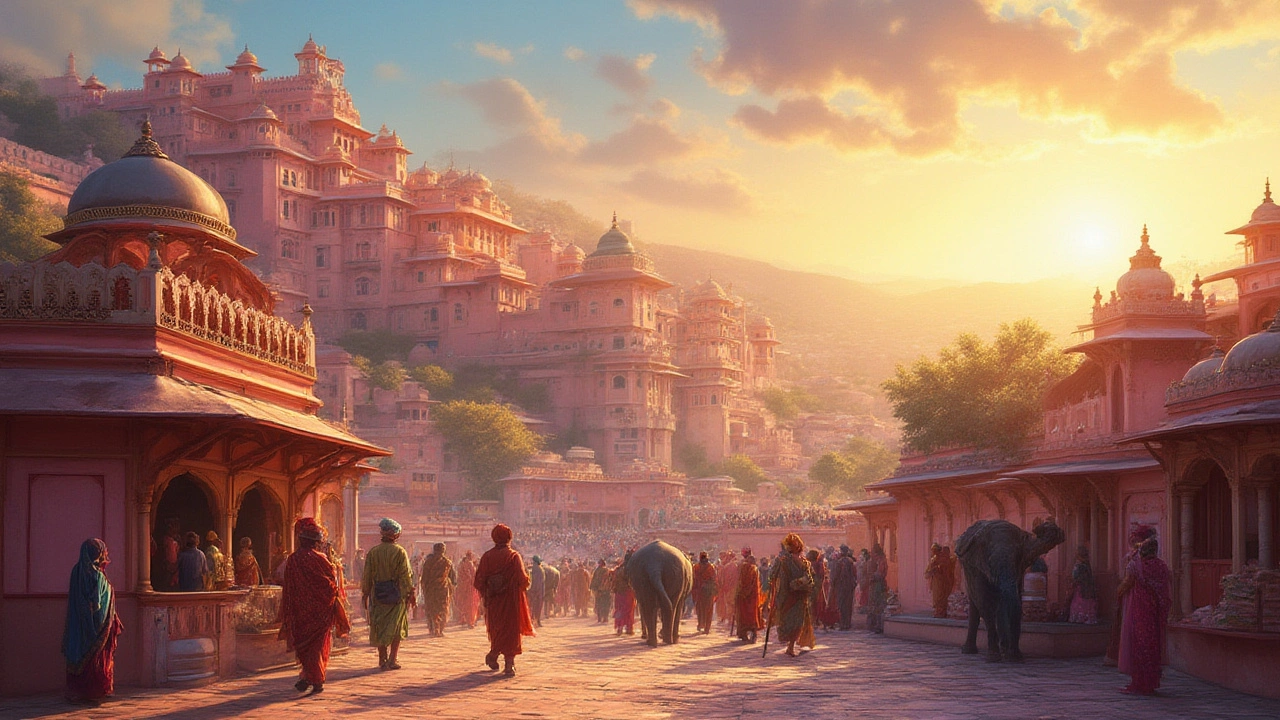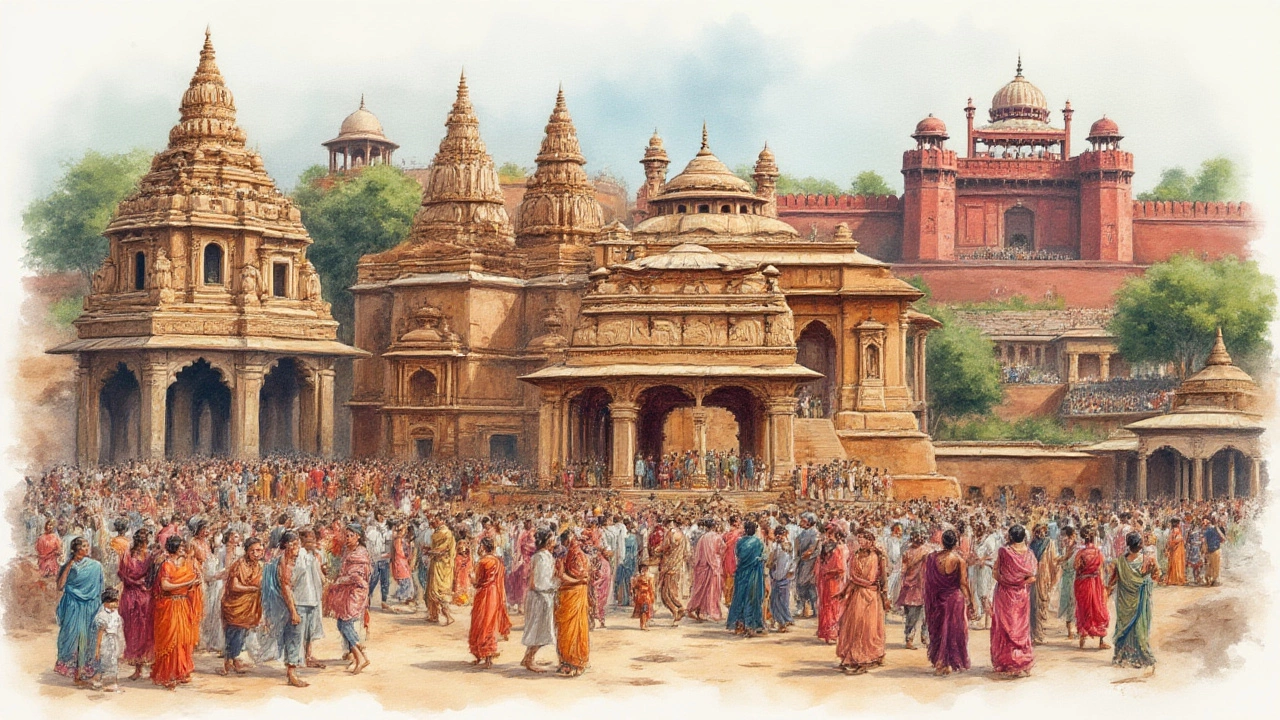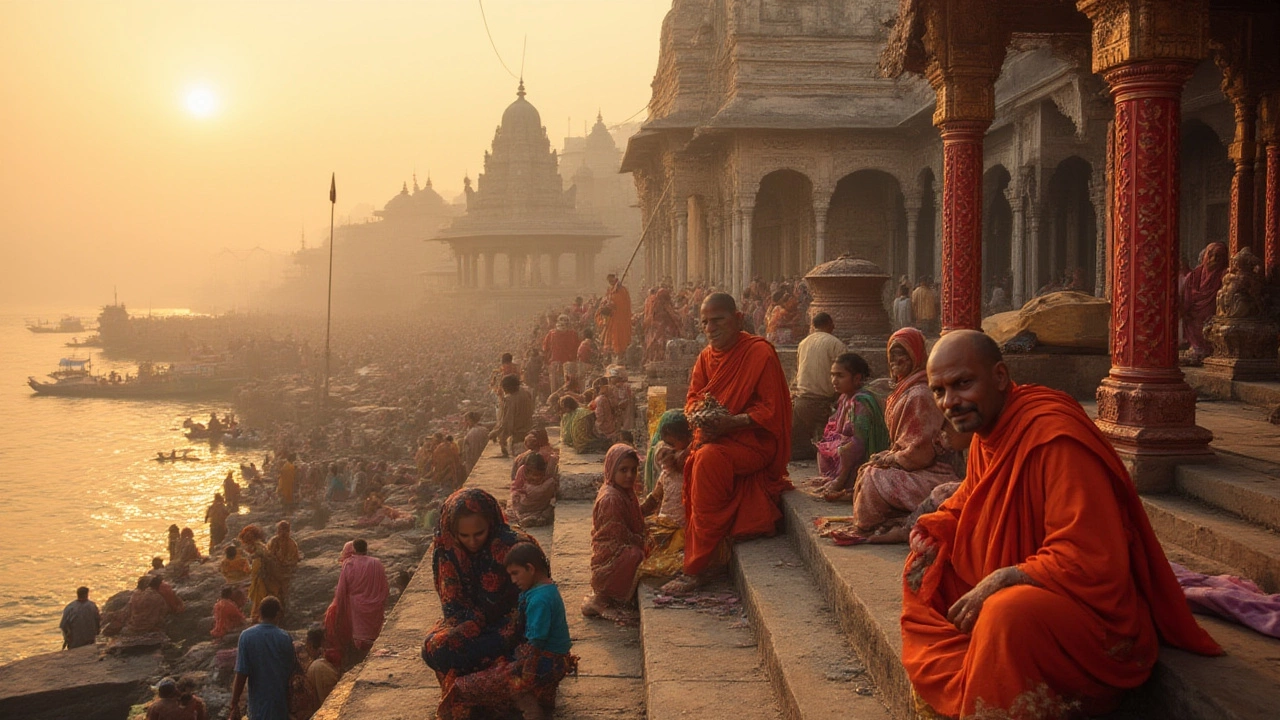Walk into any street of India, and you’ll spot centuries-old stories carved into walls, rituals alive in narrow lanes, and architecture that laughs at the passing of time. But throw the question—“Which city is known as the heritage site of India?”—into a room full of locals, and watch the debate fire up. The truth is, India isn’t just a country with a rich heritage; it’s a string of pearls, each city gleaming with its own cultural shine. But one name keeps popping up more than any other: Varanasi. Yet to leave out places like Jaipur, Agra, or Delhi would be criminal. So what really gives a city the right to this heavyweight title?
A World of Heritage: UNESCO’s Indian City List
When you talk heritage in India, it isn't just about old structures standing tall. It’s about recognition on a global scale. UNESCO’s World Heritage list makes all the difference. As of July 2025, India boasts 42 UNESCO World Heritage Sites, and a handful of cities double up with more than one spot to brag about. Jaipur is the classic go-to, officially dubbed a UNESCO World Heritage City in 2019. That didn’t come easy; Jaipur’s old city is a living maze, painted pink in the 18th century to welcome royal guests. You can still get lost here, wandering the bazaars, palaces, and temples that pile history on top of tradition.
But Jaipur isn’t riding solo. Ahmedabad, in Gujarat, became India’s first UNESCO World Heritage City in 2017. Step into the pols (historic housing clusters) and you’ll see why—elaborate wooden homes, secret courtyards, and stepwells tell the city’s murmured legacy. And don’t forget Varanasi. It might not have a UNESCO nod for the city as a whole, but it’s celebrated globally as one of the world’s oldest continuously inhabited places. Every ghat, temple, and alley here screams heritage deeper than timezone changes.
The funny thing is, different cities win the tag among locals for different reasons. In the south, Hampi in Karnataka dazzles with boulder-strewn ruins that hint at a vanished empire. Kolkata, with Victorian relics and colonial airs, was once “the second city of the British Empire.” Each city has UNESCO sites, but even more, they have heartbeat. That’s what pulls in the curious and the spiritual alike.
Varanasi: Breathing History Every Dawn
If you’re looking for the spiritual roots of Indian civilization, there’s simply no other place like Varanasi. Over 3,000 years old and still thumping to the songs of pilgrims, it’s where life, death, and faith collide in daily rituals. What sets Varanasi apart isn’t just age. It’s the lived-in texture: sunrise boat rides on the Ganges, the waft of incense on Dashashwamedh Ghat, and the morning temple bells that blend with the evening’s fiery aarti prayers.
Interesting fact: Varanasi has never stopped being a living city—even Alexander the Great’s men wrote about its temples. Ancient texts, including the Rigveda, mention it by name. You walk a thin line here between spiritual awe and sensory overload. There’s a strong sense of continuity. You’ll see scholars reciting Sanskrit next to college students filming TikToks. Crack-of-dawn air is cool and thick, with the river reflecting gold before the summer heat blurs the rooftops. Those sunrise ghats? They’ve been in ritual use since the Bronze Age. And Varanasi isn’t all chaos; winding alleyways lead to exquisite sari shops and silversmiths who insist on tea and stories as much as sales.
Pilgrims come to wash away sins or scatter ashes, believing a dip in the river breaks the cycle of rebirth. Meanwhile, locals talk politics, cricket, and philosophy, often all at the same time. This juxtaposition attracts seekers: artists, musicians, and writers flock here, from Ravi Shankar to Mark Twain (who called Varanasi “older than history, older than tradition, older even than legend”). Here, heritage isn’t locked behind glass cases—it’s everywhere, living, breathing, still evolving.

Jaipur: Pink Facades and Royal Narratives
If Varanasi is about the timeless, Jaipur is about architecture, order, and a blast of colors. Known as the Pink City, Jaipur’s old town earned UNESCO recognition for its unique urban planning and fusion of Rajput, Mughal, and European styles. Think Hawa Mahal’s honeycomb windows, the Amber Fort’s mirrored halls, and the Jaigarh Fort holding the world’s largest cannon on wheels.
The pink wasn’t an accident—it was a grand welcome gesture for the Prince of Wales back in 1876, and residents keep refreshing the color to this day. Walk down Johari Bazaar, fetch yourself a glass of cold lassi, and you’re tripping through the past with every step. Jaipur’s streets are a grid—rare in India—based on ancient Hindu architectural texts. This city knows how to mix royalty with rug sellers, camel carts with boutique hotels, and palace intrigue with festival fireworks.
You’ll find locals fiercely proud of their city’s triple whammy status: architectural marvel, UNESCO heritage, and cultural powerhouse. Jaipur also hosts the world’s largest literary festival and crafts the finest block-printed fabrics. If you’re a numbers person, 2022 saw nearly 2.6 million domestic and international tourists pack its palaces and markets. Food tip: Try the kachori with spicy chutney—and don’t skip the late-afternoon kulfi.
Ahmedabad and Beyond: Where Old Meets New
Ahmedabad doesn’t just win for its walled city and intricate havelis. The city is a patchwork of history and modern energy: Sidi Saiyyed Mosque with its filigree windows, the stepwells at Adalaj, and centuries-old Jain temples bubbling with chants. Gandhi made this city a nerve center for freedom fighters, and the Sabarmati Ashram draws thinkers from around the world. UNESCO recognized it not just for physical walls, but for how the communities—Hindus, Jains, Muslims—shaped and protected their neighborhoods together.
One cool detail: The 1411 Shaking Minarets near the railway station still puzzle engineers. Shake one, the other vibrates. Why? That’s the secret. Ahmedabad’s pols are like living museums, with parrot-green doors and secret wells for hiding during attacks. Unlike museum cities cut adrift from today, Ahmedabad’s heartbeat pumps through street-food stalls, craft co-ops, and textile bazaars. Stay up late and catch a midnight biryani, then dive into the kite festival in January, when the sky fills with aeronautical riots of color.
Beyond Ahmedabad, other contenders for “heritage city” tear up the script. Mysuru’s autumn festival brings its palaces to life with a million lights. Delhi packs several UNESCO sites—Red Fort, Qutub Minar, Humayun’s Tomb—into its version of chaos. Kolkata’s colonial treasures and poets ferment rebellion and nostalgia in equal measure. Then there’s Hampi, a boulder-strewn landscape frozen mid-myth. Indian heritage isn’t just picked for show—it’s lived, tasted, argued about and, sometimes, rebuilt with smartphone help.

Tips for Visiting India’s Heritage Cities
First up: come curious, but come prepared. Indian heritage cities don’t unfold quietly—you have to step in and engage with it. Respect local customs; even in cosmopolitan spots, temples and mosques stick to centuries-old rules on dress and behavior. Bargain at the markets but don’t shortchange the artisans—some family skills go back twenty generations.
Best times to visit? Jaipur is most fun in winter (November to February), when the air is cool and festivals light up the city almost every week. Varanasi? Visit around Dev Deepawali (usually late autumn)—the Ganges comes alive with a thousand flickering lamps. Ahmedabad’s festival calendar is worth tracking; Uttarayan in January turns the sky into a party, and Navaratri’s dance marathons keep the city pulsing at night.
If you want something a little different, get up for sunrise boat rides in Varanasi or join a local pol-walk in Ahmedabad. In Jaipur, plan ahead for palace tours and block-printing workshops, or try a rooftop thali dinner with old town views. Stay hydrated—the weather swings from chilly fog to sharp heat quickly. And take your time: India’s heritage isn’t fast food. Linger, listen, and ask questions—you’ll always get more stories than you bargained for.
| City | Year Recognized | Key Heritage Highlights |
|---|---|---|
| Ahmedabad | 2017 | Pols, Sidi Saiyyed Mosque, Jain temples |
| Jaipur | 2019 | Hawa Mahal, Amber Fort, City Palace |
| Varanasi* | Ancient/Not UNESCO-listed city-wide | Ghats, Kashi Vishwanath, river rituals |
*Varanasi is not officially a UNESCO World Heritage City but is considered the spiritual and heritage heart of India globally.
